Into the blue: the Italian artist Ettore Spalletti is diving into a new London show
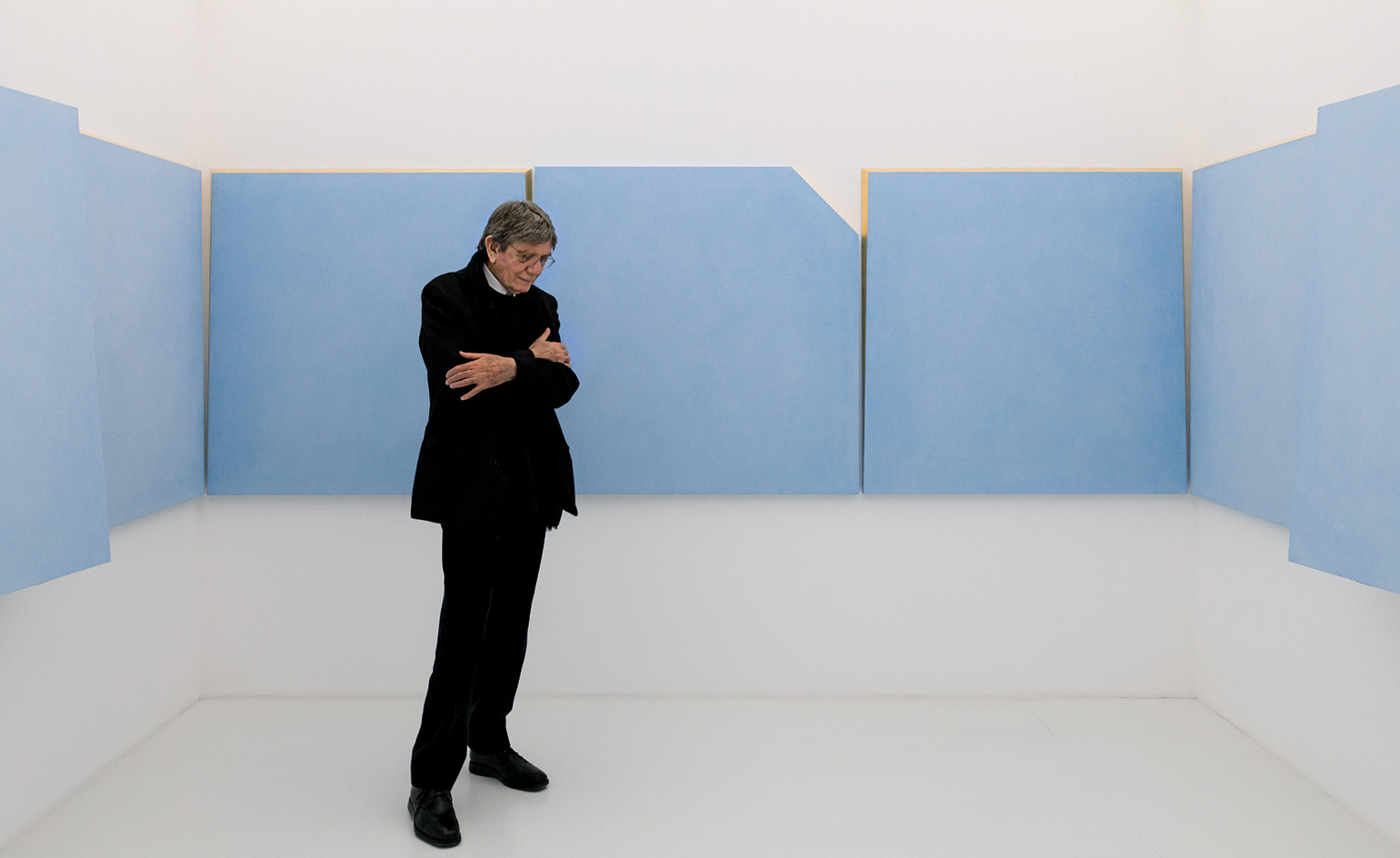
The entrance door of Ettore Spalletti's studio is azure as, appropriately, is the name of his personal assistant, Azzurra, who leads us inside. Located in Moscufo, in the hills of Abruzzo in central Italy, Spalletti's studio lies halfway between Cappelle sul Tavo, where he was born, and Spoltore, where he now lives. It's an immense space, with an industrial feel that contrasts sharply with the lush surrounding hills (renamed the Sleeping Beauty by locals because of their supposed similarity to the body of a woman resting on her side).
Spalletti’s works have always demonstrated the ability to transform any environment they inhabit, from the gently decayed baroque of Turin’s Castello di Rivoli in a landmark 1991 show to the austere cathedral in Reggio Emilia that hosted 2011’s Candelabro Pasquale. His 600 sq m studio is similarly uplifting. Even the office and reception space, with its standard-issue white walls and midcentury furniture, has been transformed by the artist with the addition of a bookcase in his signature colour palette. All the books and magazines are arranged in height order, and the covers are lined with coloured tissue paper in alternate shades of blue, light blue, azure, grey, white, pink and gold.
In the vast heart of the studio are a couple of works belonging to the new Landscapes series (2015–2016) in deep sky blue, Colombia blue and bleu de France (some of which are getting ready to be shipped to London for his first exhibition at the Marian Goodman Gallery, opening tomorrow, 28 April), some cone-shaped sculptures (Vases, 1982), and a cluster of small marble columns in pink and grey (Movimento trattenuto, 2001). A room behind hosts some of his Carte series, thin sheets of paper whose colour was obtained by immersing them several times in shades of blue and dusty pink. They hang on the wall, almost touching the floor and adorning the prototype of a seat designed for the Salle des Départs at Hôpital Raymond Poincaré, France.
Returning to the main space, your gaze is drawn to a set of shoebox-shaped sculptures, Scatola di Colore, which is composed of two alabaster blocks, resting one above the other. Next to it is one of his most celebrated works, Stanza Azzurra (2006). Dedicated to his brother who ‘loved all the [shades of] blue’, it features a series of azure panels, some with gold frames that open outwards, emphasising their tri-dimensionality and their detachment from the walls, while others tilt towards the viewer. A white pencil, sharpened at both ends, holds them in position (an idea born of necessity that has become the artist’s trademark).
A tall, gentle man in his late 70s, Spalletti seems somewhat reserved for someone who has been a fixture of the international art circuit since the early 1980s. He took part in Documenta in 1982 and 1992, and participated at the Venice Biennale four times. He had a solo show last year at the Palazzo Cini in Venice. Now comes the eagerly-awaited Marian Goodman show, a site-specific installation of his work at the prestigious London gallery. ‘I always think my works are better than me because, after so many years, they can travel without me and place themselves in spaces they believe to be more appropriate. There was a time when I accompanied them everywhere. Now they have become adults and I have them to accompany me’.
Spalletti enjoys strolling around his studio, trying to capture the changing colours of his works. He moves them often to help them communicate with the space. ‘I spend my days either walking around or sitting at the centre of the space,’ he says. ‘Sometimes I’m sitting for hours, waiting for the right light that delivers a new colour from an existing one. And when a cloud covers the sun and the light in the studio fades, the works acquire a haze that I love.’
His colours are not fixed. They change depending on the space they occupy and the angle of the light that hits them. To achieve this effect Spalletti uses a technique that he has honed over the years. ‘I prepare a colour mixture and every day I lay a thin layer, for 15 to 20 days, until I get the desired thickness. The times and rhythms are driven by the result I want to achieve in the end. During this process, the final colour cannot be seen. Only at the end, when the pigments break because of the abrasion and are dispersed on the surface, is the final hue revealed.’
Although his works are not iconographic, Spalletti’s work hints at memories, at landscapes he has admired and people he has met. I ask him how he thinks of his work. ‘I like to think of myself as a figurative painter like Turner rather than an artist. I love Turner a lot. When I use pink, I think of the complexion of human skin that changes along with our mood, while blue is atmospheric, it’s a colour in which we are constantly immersed, it’s the colour of the sky. White is the colour of the light, and grey is the colour of reception because it’s able to unite all the other colours. A grey, for example, can lead you to blue, cobalt and ultramarine, but also to purple.’
His paintings may seem unequivocally modernist, but his sculptural work also takes some inspiration from classicism. His vases are justly celebrated, as are his columns painted in white, grey, blue and pink. ‘I was interested in looking at these objects that had made it through the history of art until nowadays. To me, the column also symbolises the vertical posture of the human being when alive’.
As originally featured in the May 2016 issue of Wallpaper* (W*206)
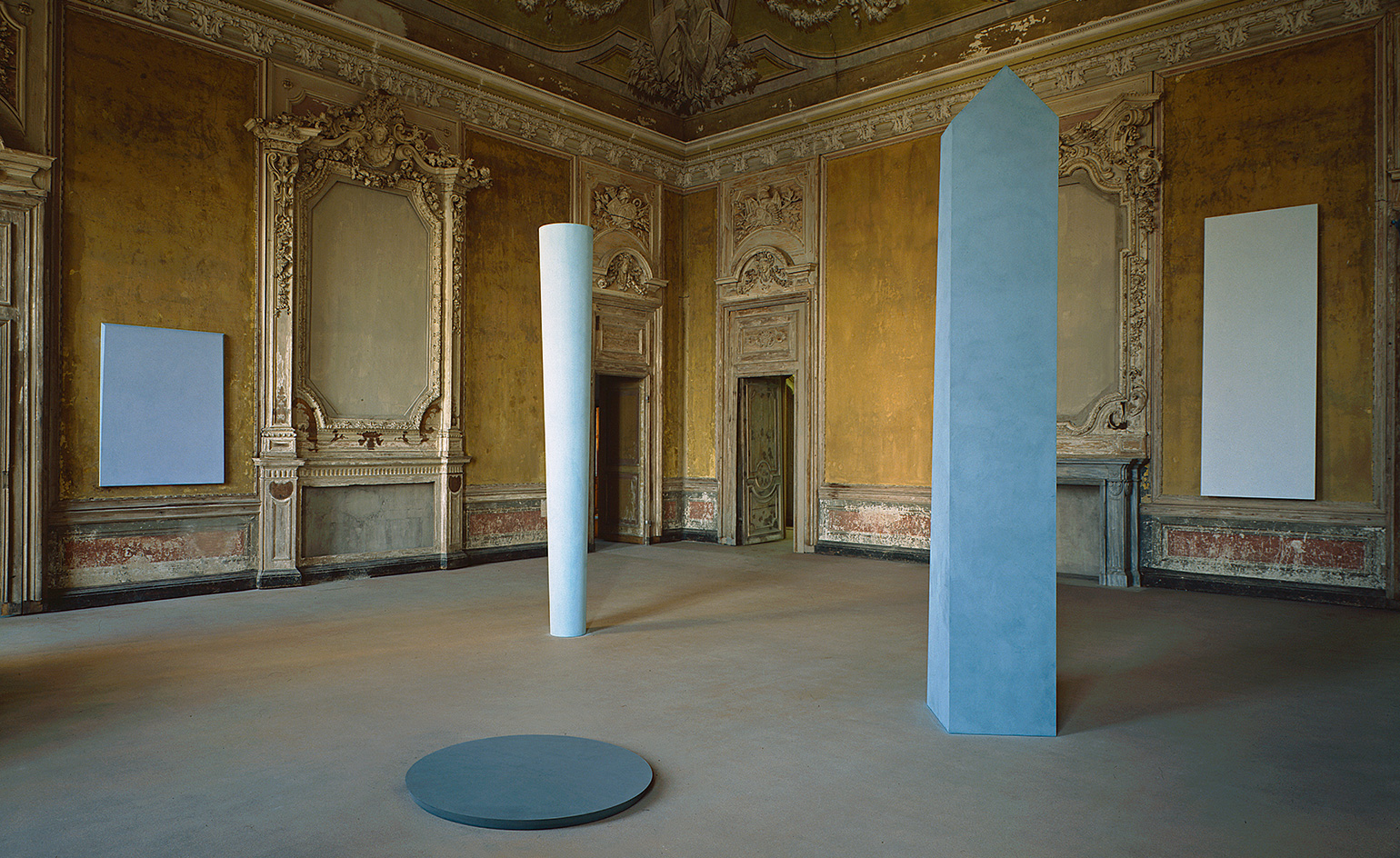
A view of the exhibition in Castello di Rivoli, Turin, in 1991.
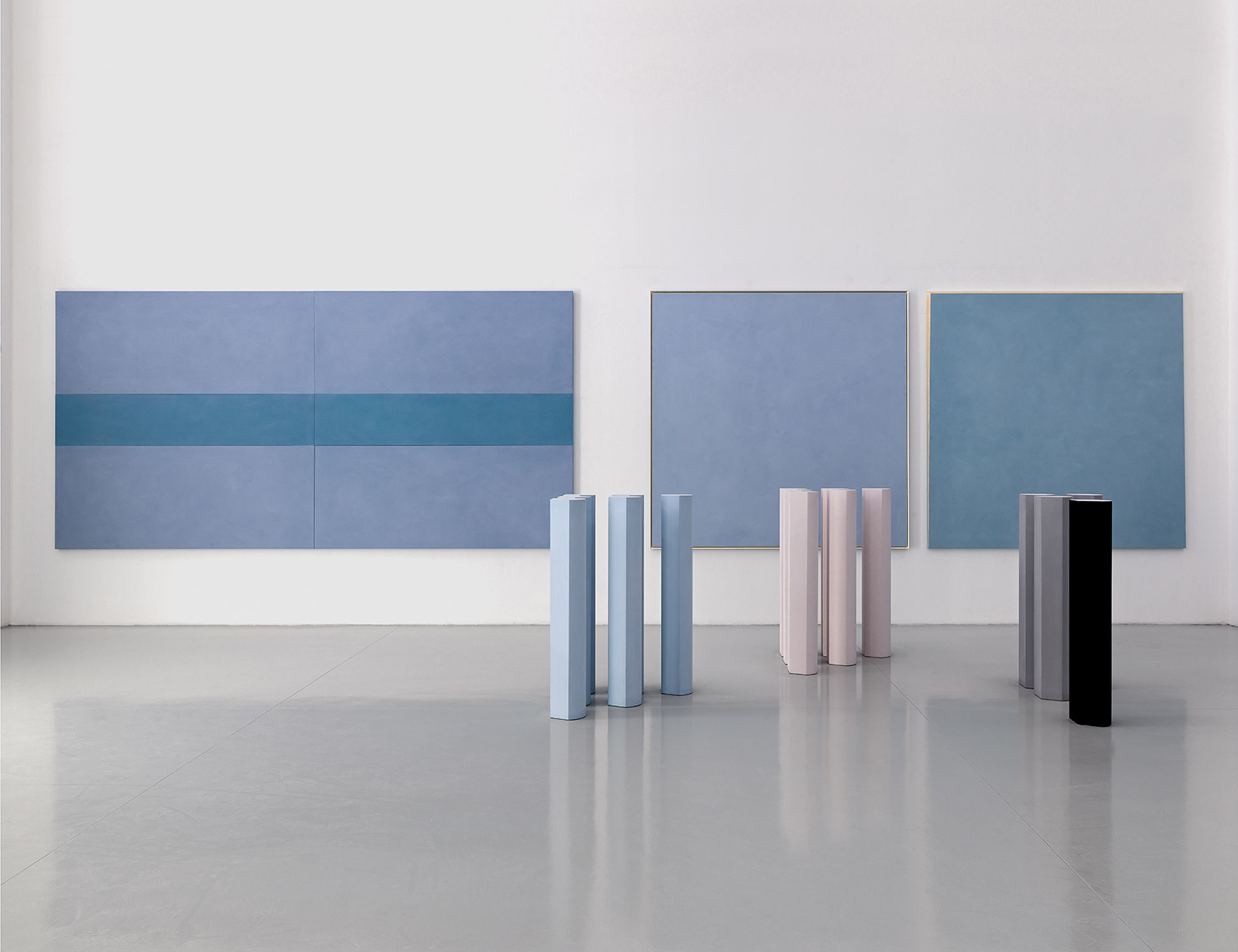
Pictured from left to right, on walls: Paesaggio 8, 2016; Il colore e l’Oro, Eco Rossoazzurro, 2016; Eco, Grigio, 2016. On floor: Movimento Trattenuto, 2001.
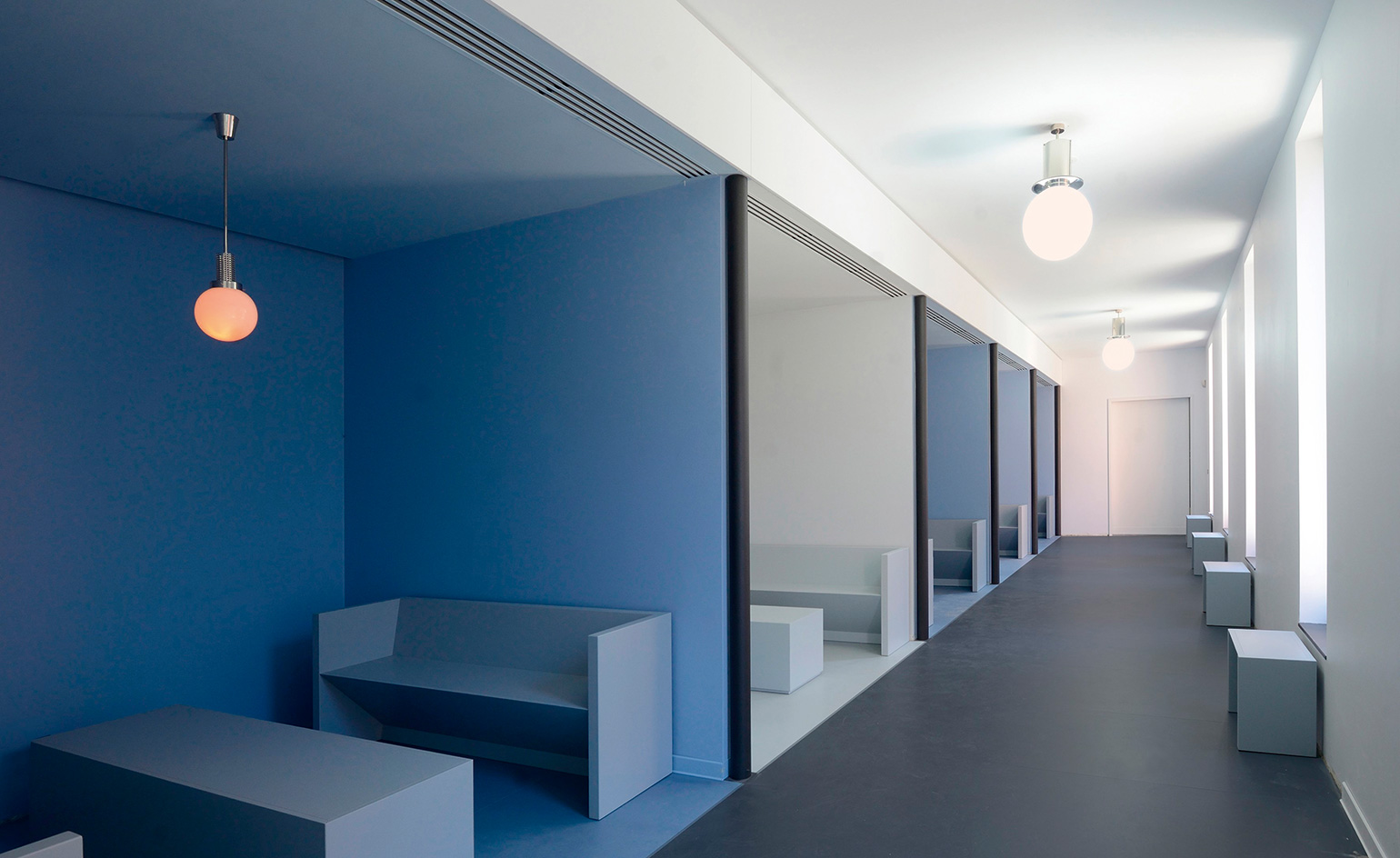
Spalletti is currently working on a new project with his wife, architect Patrizia Leonelli, the focus of which is the restoration of a 1960s chapel in Città Sant’Angelo with the addition of a morgue and gardens. Pictured: a rendering of the inside of the morgue.
INFORMATION
‘Every dawn, is first’, 28 April – 4 June, Marian Goodman Gallery. mariangoodman.com
ADDRESS
Marian Goodman London
5 – 8 Lower John Street
London W1F 9DY
Receive our daily digest of inspiration, escapism and design stories from around the world direct to your inbox.
-
 Modernist Scotland explores the country’s impressive legacy of contemporary architecture
Modernist Scotland explores the country’s impressive legacy of contemporary architectureA new book, Modernist Scotland, delves into the art and ambitions of the International Style in post-war Scotland, presenting 150 projects that typify an age of optimism and innovation.
-
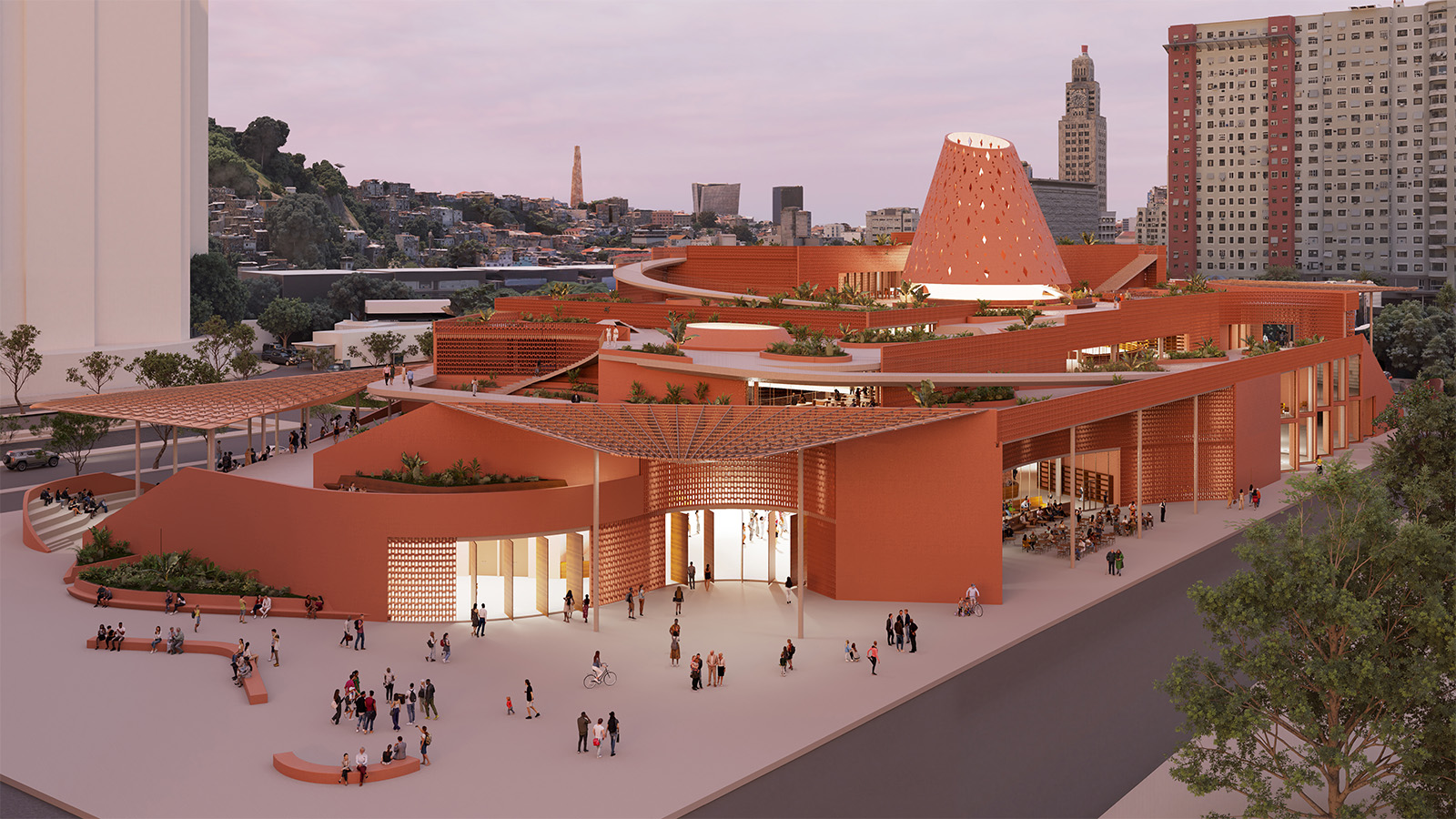 An exclusive look at Francis Kéré’s new library in Rio de Janeiro, the architect’s first project in South America
An exclusive look at Francis Kéré’s new library in Rio de Janeiro, the architect’s first project in South AmericaBiblioteca dos Saberes (The House of Wisdom) by Kéré Architecture is inspired by the 'tree of knowledge', and acts as a meeting point for different communities
-
 Samuel Collins’ stone sculptures capture the raw and rugged nature of the British landscape
Samuel Collins’ stone sculptures capture the raw and rugged nature of the British landscapeThe British artist and sculptor presents 'Silence Split', a series of stone sculptures which presents an abstract take on the horizontal and vertical landscape
-
 Out of office: The Wallpaper* editors’ picks of the week
Out of office: The Wallpaper* editors’ picks of the weekIt’s been a week of escapism: daydreams of Ghana sparked by lively local projects, glimpses of Tokyo on nostalgic film rolls, and a charming foray into the heart of Christmas as the festive season kicks off in earnest
-
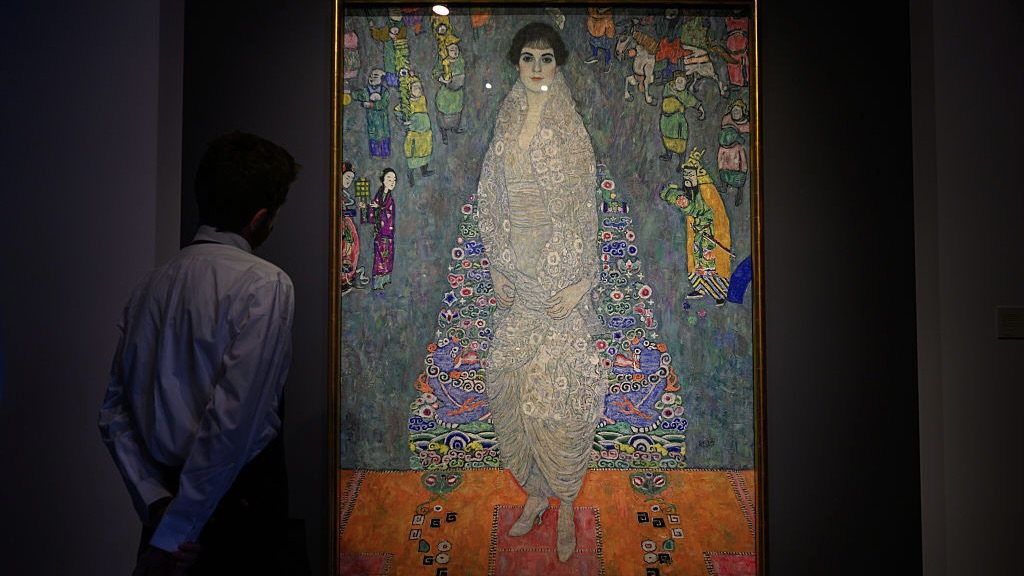 This Gustav Klimt painting just became the second most expensive artwork ever sold – it has an incredible backstory
This Gustav Klimt painting just became the second most expensive artwork ever sold – it has an incredible backstorySold by Sotheby’s for a staggering $236.4 million, ‘Portrait of Elisabeth Lederer’ survived Nazi looting and became the key to its subject’s survival
-
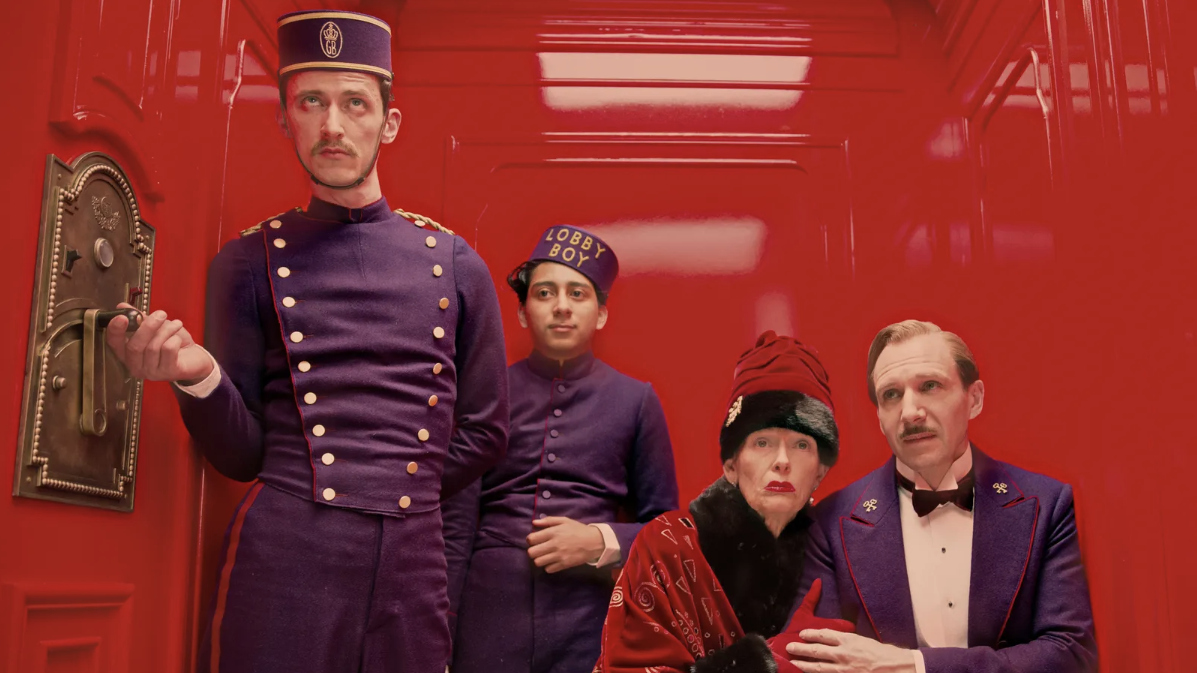 Wes Anderson at the Design Museum celebrates an obsessive attention to detail
Wes Anderson at the Design Museum celebrates an obsessive attention to detail‘Wes Anderson: The Archives’ pays tribute to the American film director’s career – expect props and puppets aplenty in this comprehensive London retrospective
-
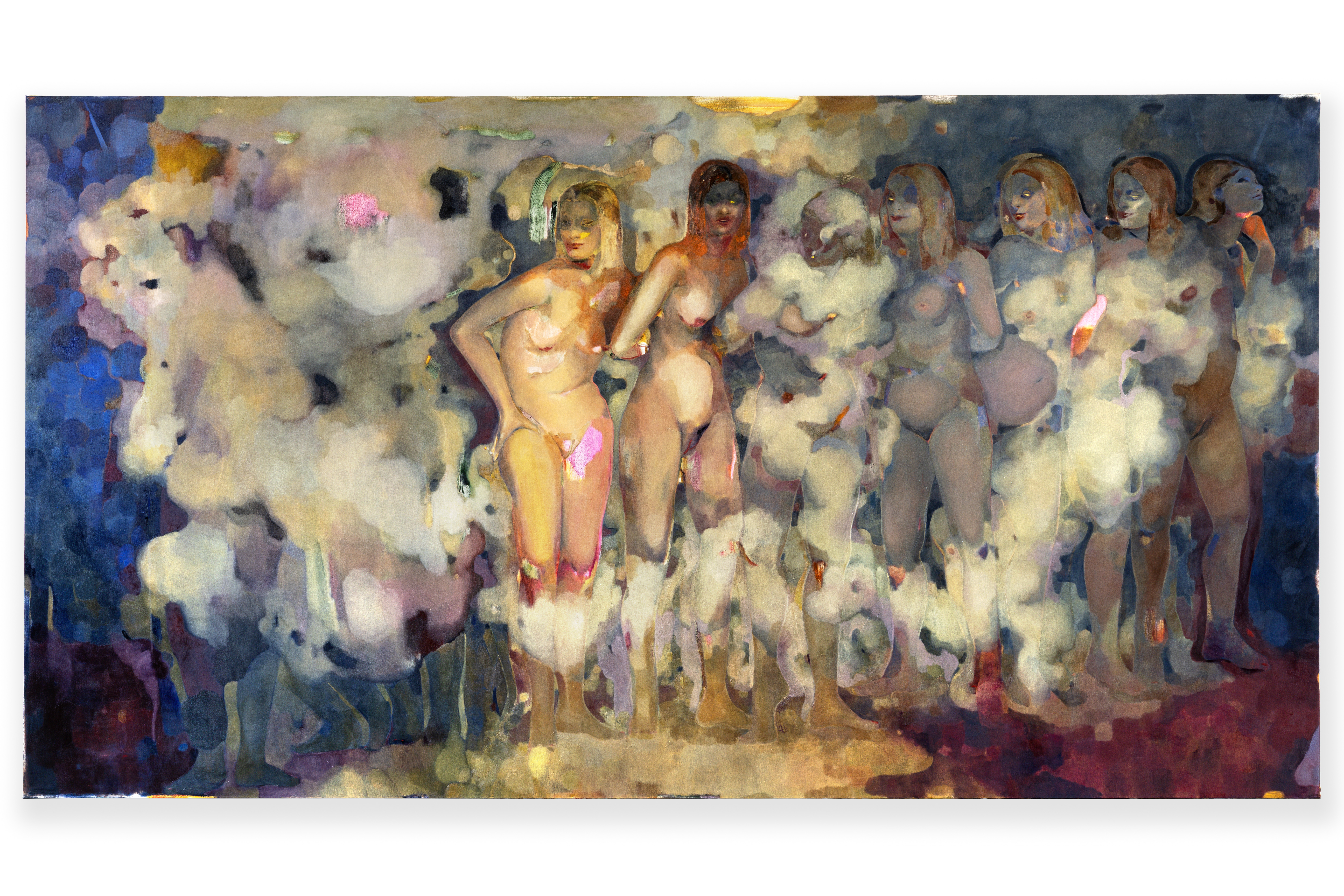 Meet Eva Helene Pade, the emerging artist redefining figurative painting
Meet Eva Helene Pade, the emerging artist redefining figurative paintingPade’s dreamlike figures in a crowd are currently on show at Thaddaeus Ropac London; she tells us about her need ‘to capture movements especially’
-
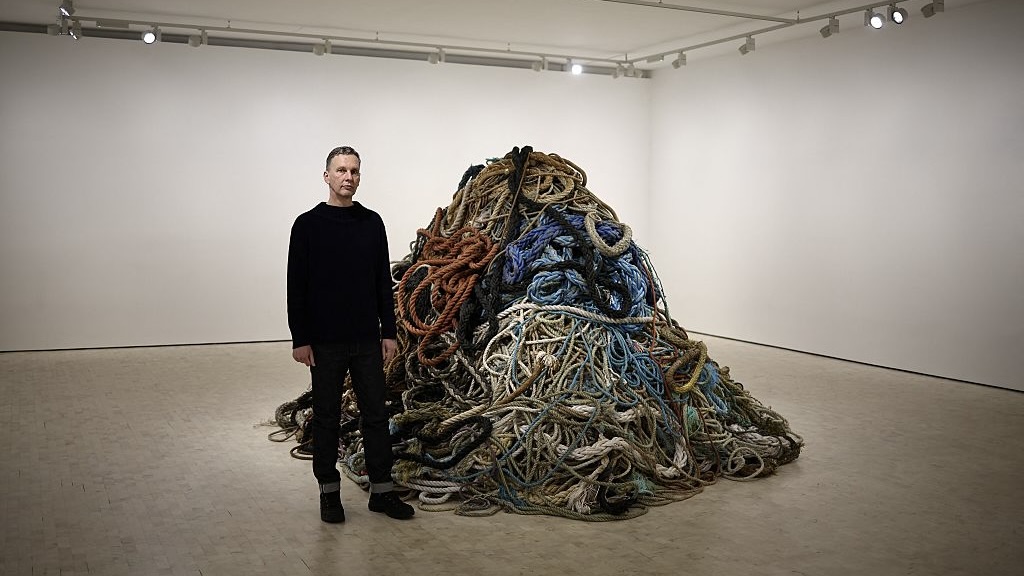 David Shrigley is quite literally asking for money for old rope (£1 million, to be precise)
David Shrigley is quite literally asking for money for old rope (£1 million, to be precise)The Turner Prize-nominated artist has filled a London gallery with ten tonnes of discarded rope, priced at £1 million, slyly questioning the arbitrariness of artistic value
-
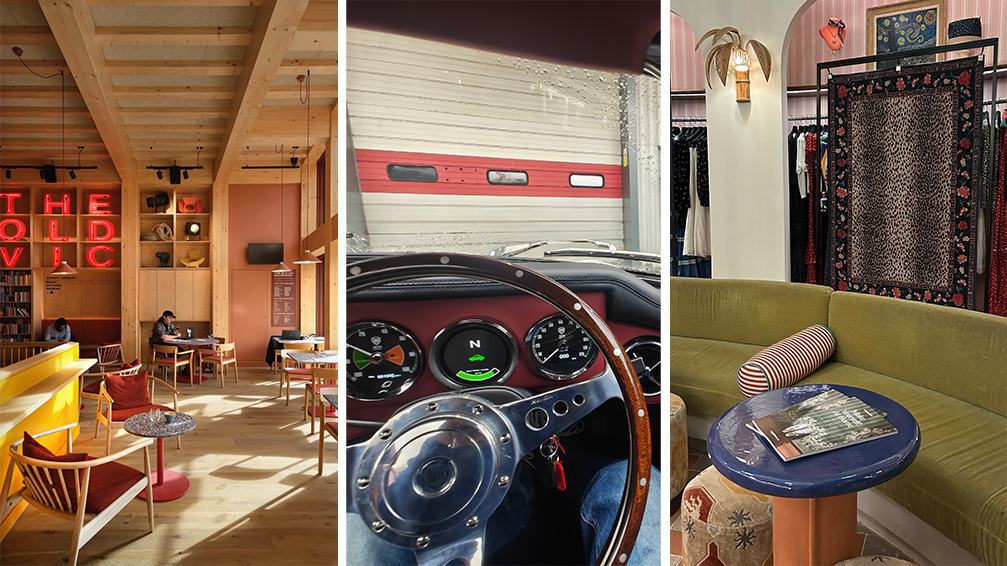 Out of office: The Wallpaper* editors’ picks of the week
Out of office: The Wallpaper* editors’ picks of the weekThe rain is falling, the nights are closing in, and it’s still a bit too early to get excited for Christmas, but this week, the Wallpaper* team brought warmth to the gloom with cosy interiors, good books, and a Hebridean dram
-
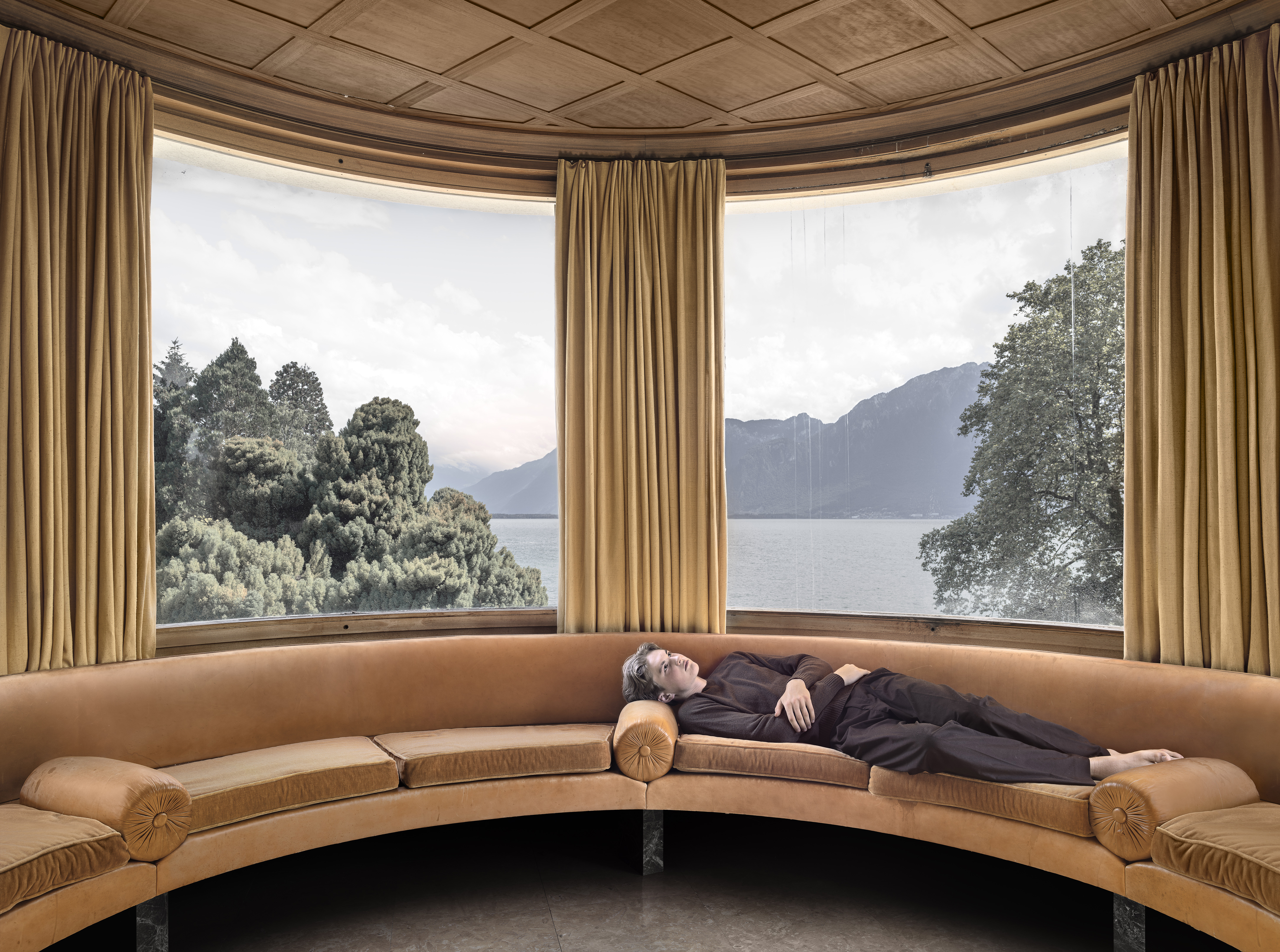 A former leprosarium with a traumatic past makes a haunting backdrop for Jaime Welsh's photographs
A former leprosarium with a traumatic past makes a haunting backdrop for Jaime Welsh's photographsIn 'Convalescent,' an exhibition at Ginny on Frederick in London, Jaime Welsh is drawn to the shores of Lake Geneva and the troubled history of Villa Karma
-
 Maggi Hambling at 80: what next?
Maggi Hambling at 80: what next?To mark a significant year, artist Maggi Hambling is unveiling both a joint London exhibition with friend Sarah Lucas and a new Rizzoli monograph. We visit her in the studio